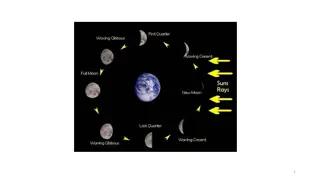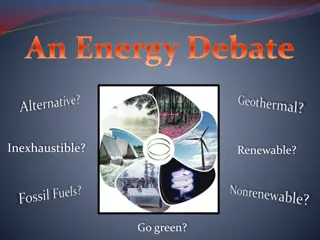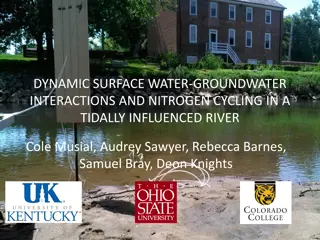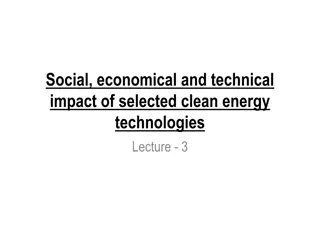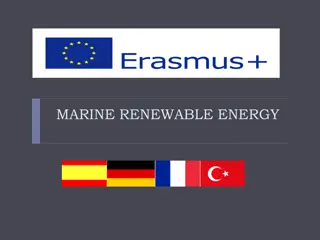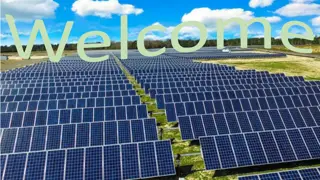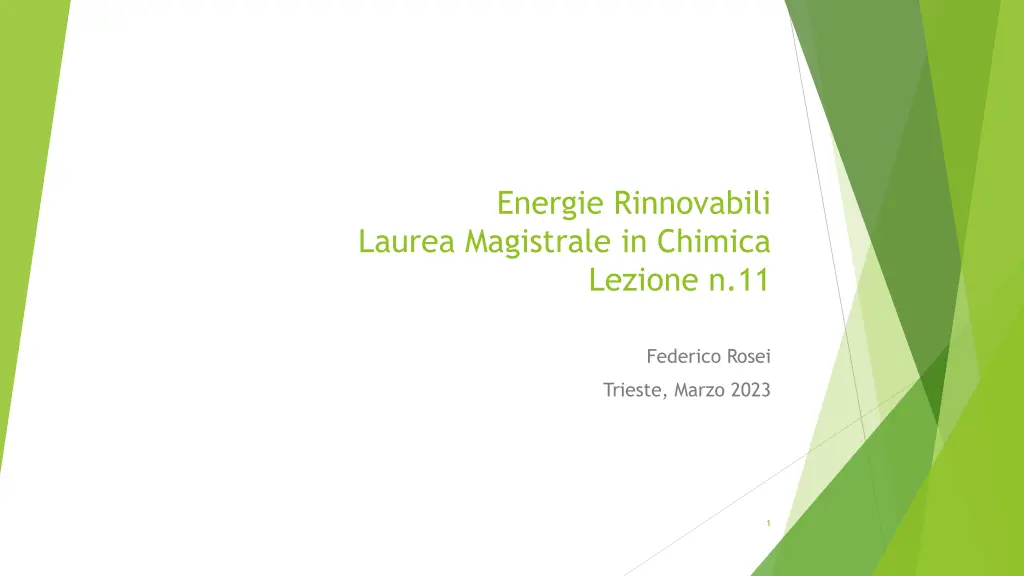
Harnessing Tidal Energy: Advantages, Challenges, and Potential Landscape Requirements
Discover the landscape needed for tidal energy generation, suitable locations, advantages like predictability and longevity, challenges such as high costs, environmental impacts, and limited energy demand. Learn how advancements in tidal technology could enhance its competitiveness in the renewable energy sector.
Uploaded on | 0 Views
Download Presentation

Please find below an Image/Link to download the presentation.
The content on the website is provided AS IS for your information and personal use only. It may not be sold, licensed, or shared on other websites without obtaining consent from the author. If you encounter any issues during the download, it is possible that the publisher has removed the file from their server.
You are allowed to download the files provided on this website for personal or commercial use, subject to the condition that they are used lawfully. All files are the property of their respective owners.
The content on the website is provided AS IS for your information and personal use only. It may not be sold, licensed, or shared on other websites without obtaining consent from the author.
E N D
Presentation Transcript
Energie Rinnovabili Laurea Magistrale in Chimica Lezione n.11 Federico Rosei Trieste, Marzo 2023 1
n.11 Tidal energy 2
What kind of landscape is needed for tidal energy? Suitable locations for capturing tidal energy include those with large differences in tidal range, which is the difference between high tide and low tides, and where tidal channels and waterways become smaller and tidal currents become stronger. 3
Tidal Energy Harnessed by converting energy from tides into useful forms of power, mainly electricity using various methods. The turbines are likened to wind turbines, except they are positioned underwater. Although not yet widely used, tidal energy has the potential for future electricity generation. Tides are more predictable than wind & sun. Traditionally suffered from relatively high cost & limited availability of sites with sufficiently high tidal ranges => constricting total availability. Recent technological developments & improvements in design (e.g. dynamic tidal power, tidal lagoons) turbine technology (e.g. new axial turbines, cross flow turbines) => total availability of tidal power may be much higher than previously assumed & economic & environmental costs may be brought down to competitive levels. 4
Advantages What are the advantages of tidal energy? Predictable energy output tides are predictable and constant, thanks to gravitational forces. Only needing to assess the low or high tide, makes it easier for engineers to design efficient systems. As technology advances for tidal, it will get increasingly cheaper and efficient. Protects coastal flooding due to the stability of the rock armour under different design conditions. Tidal lagoons can withstand 1 in 500 storm surges and waves a year. Equipment and facilities of tidal power can last a lot longer and be more cost- competitive than other renewable technologies. With an asset life of 120 years, developments are made for future increases in sea-level. 6
Challenges What is stopping us from making the most of tidal energy? It is currently expensive to construct tidal power plants as they require high capital investments. Environmental issues such as habitat change, particularly with tidal barrages. Maintaining and repairing equipment can be a challenge. Limited energy demand. Powerful tides only happen normally 10 hours out of each day, this means the tidal energy storage capacity must be developed. Difficult to provide tidal energy to coastal communities, as the energy produced by the tides is often a long distance from where the electricity will be used inland. 7
What are the dangers of tidal energy? Tidal power can damage marine life, as tidal turbines with their rotating blades may lead to deaths of living creatures in a sea. Noise from the rotation of the turbines may also impact fish habitations in tidal power locations. Tidal energy can also impact the quality of water and sediment processes. 8
Large-scale tidal power Currently, the Sihwa Lake project remains the world s largest tidal power station in operation, located on the west coast of South Korea. The 254 MW Sihwa project, consisting of 10 water turbine generators, has enough power to support the domestic needs of a city with a population of 500,000 people. The 552.7 GWh of electricity generated from Sihwa tidal power plant is equivalent to 862,000 barrels of oil, or 315,000 tons of CO2 the amount produced by 100,000 cars annually. Around 160 million tonnes of water flows in and out of the floodgate and waterwheel, which is responsible for half of the total water quantity in Sihwa Lake. The ongoing circulation of water between the lake and the outer sea during the energy generation process has improved the water quality. With limited energy resources, South Korea is looking to transition to tidal power, to provide an alternative to fossil fuels and develop emission-free clean energy. 9


